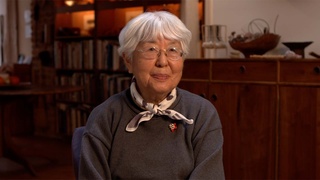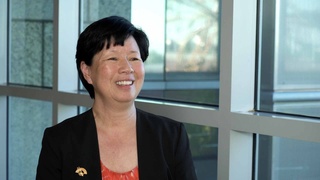Interviews
Rounding up Issei and Nikkei
The first 48 hours, I think about 3,000 Isseis were picked up. And the first ones were, were I don’t know, uh, Japanese businessmen, Japanese schoolteachers, martial arts teacher—they didn’t pick up all the fishermen then. The next group, every fisherman, 16 or over, were picked up.
And, of course, we see the papers blaring headlines, “Get the Japs Out!” and all that. So, we knew that we were, you know, all the Japanese were gonna go. And, I worked in San Pedro at the Woolworth, Five and Dime. There were hardly any Asians, Blacks or Chicanos that had jobs in San Pedro, and I didn’t know how long they were gonna keep me before they let me go. But, I knew I wouldn’t be able to hold on to that Five and Dime job.
And, well, I think, Japanese in other cities, they were all losing jobs—Long Beach, Los Angeles, all the places—and, of course, all of us called up each other, you know, friends saying, “What do you think’s gonna happen to us?” And, it was in the paper already, you know, that California’s wanted every Jap out and so…So, we knew that sooner or later we’re all gonna be sent out of California.
Date: June 16, 2003
Location: California, US
Interviewer: Karen Ishizuka, Akira Boch
Contributed by: Watase Media Arts Center, Japanese American National Museum.
Explore More Videos

The riot in Manzanar
(b. 1921) Nisei veteran who served in the occupation of Japan

The Dopey bank that survived the war
(b. 1934) Award-winning Disney animation artist who was incarcerated at Topaz during WWII

Accepted by Japanese society as I learned more Japanese (Japanese)
(b. 1979) Sansei Nikkei Brazilian who lives in Oizumi-machi in Gunma prefecture. He runs his own design studio.

Evacuated to the Jungle
(b. 1938) Philipines-born hikiagesha who later migrated to the United States.

Captured by Guerillas after bombing of Pearl Harbor
(b. 1938) Philipines-born hikiagesha who later migrated to the United States.

Grandfather picked up by US Army
(b. 1952) Former banking executive, born in Hawaii

Father's business partner operated their farming business during WWII
(b. 1935) Sansei businessman.

Father was convinced the constitution would protect him
(b. 1935) Sansei businessman.


The lack of discussion about family’s incarceration in Amache
Sansei judge for the Superior Court of Los Angeles County in California


Being Confused about Racial Identity in Postwar United States
(b. 1932) Nisei American stage, film, and TV actress

Her brother’s reasons as a No-No Boy
(b. 1923) Japanese American poet, activist

Her grandfather was pressured to teach Japanese
Sansei judge on the Superior Court of Los Angeles County in California

Neighbor took care of her mother after grandfather was taken by FBI
Sansei judge on the Superior Court of Los Angeles County in California
